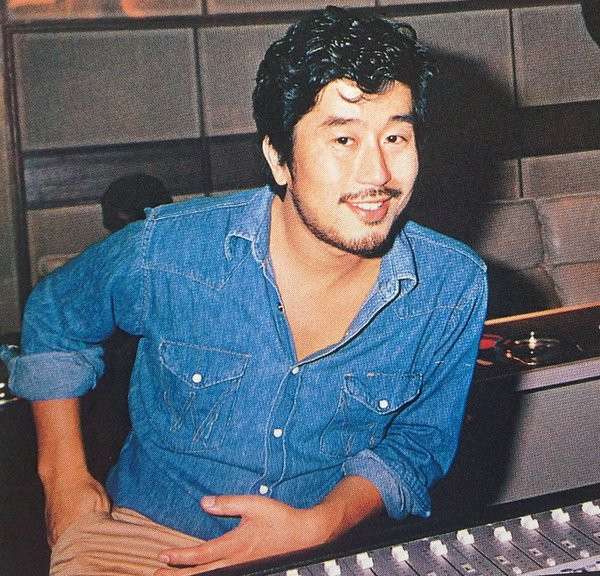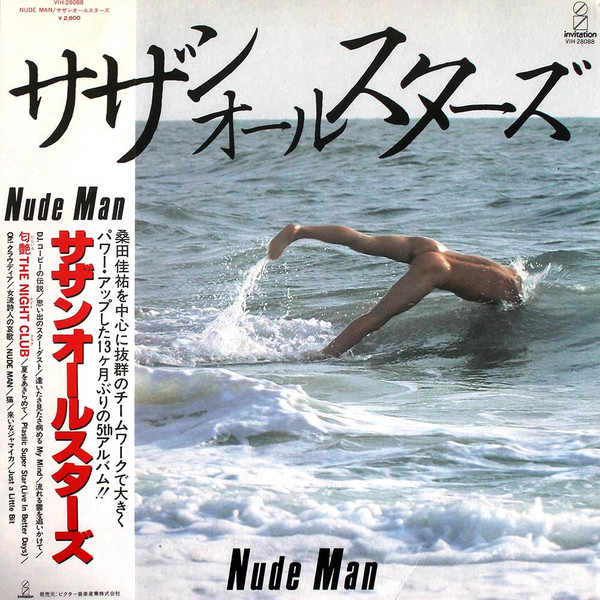Because our main exposure is the internet, a lot of westerners will point to Mariya Takeuchi (竹内まりや ) or Tatsuro Yamashita (山下達郎) as the face of 80's Japanese Pop. However, if you ask an average Japanese person about who was the most iconic singer-songwriter of that particular era, they will most likely tell you it was Yumi Matsutoya (松任谷由実), or Yumi Arai (荒井由実) you grew up in the early 70s. Matsutoya, or as fans call her Yuming (ユーミン Yūmin), is a Japanese singer, composer, lyricist, and pianist. She is renowned for her idiosyncratic voice, and live performances, and is regarded as an important figure in Japanese popular music. Her claim to fame is her starting the era of “New Music” (with the help of Tin Pan Alley) in the ’70s.
THE HISTORY
 |
Yuming’s most active period as an artist started after marrying her musical collaborator, Tin Pan Alley member Masataka Matsutoya (松任谷正隆), in 1976. From that point on she would release two whole albums a year for 6 years straight, between 1978 & 1983. Some might find this impressive, but having such a rapid content output can be detrimental to an artist's quality of music. Not to say that her music was bad, but none of the albums exactly stood out as memorable during this time period. And that’s not just my opinion, as those albums hadn't succeeded the way her previous ones had when she was single. That being said there is one album that managed to stand out among the rest; Pearl Pierce.
 |
| Masataka Matsutoya |
Pearl Pierce is Yuming’s 13th album released on June 21st, 1982 and it stands out for 3 main reasons. First off, it was the only album that Yuming released that year, putting a break on her 2 albums per year cycle. Secondly, this happens to be Yuming’s favorite album ever, and for good reason, as her prowess as a singer-songwriter comes from her attention to pop cultural trends, specifically on how they affect the lives of women, and how she incorporates them into her lyrics. Pearl Pierce seems to be the culmination of that, as the overall theme of the album happens to be the daily life & struggles of the Japanese Office Lady (or OL as they’re called). Although Yuming herself has never been an office worker, being a professional musician since her teens, she developed an empathy for them. This is especially obvious in tracks like the title song 真珠のピアス (Pearl Earring), in which the lyrics are based off of an actual fan letter, telling the story of someone who lost her man to another woman.
:format(jpeg):mode_rgb():quality(90)/discogs-images/R-3064919-1395283606-3664.jpeg.jpg)
This brings us to the last reason Pearl Pierce stands out; This was Yuming's first true City Pop album. The story of a life of an unnamed OL - going out to clubs in the evening, getting stood up for dates, eating lunch in the park alone, is accompanied by compositions that are equal parts Quincy Jones boogie and Carole King-Esque jazz-pop, making for an engaging narrative. Some notable musicians on this LP include her husband, Masataka, returning once again as the producer and on keyboards, along with his Tin Pan Alley mates, Shigeru Suzuki (鈴木茂 ) on guitar and Tatsuo Hayashi( 林 立夫) on drums. You also have jazz fusion guitarist Masaki Matsubara (松原正樹), vocal doo-wop group Time Five, and Filipino saxophonist Jake Concepcion, who's essentially the Kenny G of the East. In the end, the concept of Pearl Pierce struck a chord with fans when it did come out, hitting No. 1 on the album charts and becoming the 9th-ranked album of the year. It one won a Best Album prize along with efforts by Miyuki Nakajima(中島みゆき)and Southern All-Stars(サザン・オール・スターズ)at the 1982 Japan Record Awards.
THE MUSIC
:format(jpeg):mode_rgb():quality(90)/discogs-images/R-3064919-1501427412-4325.jpeg.jpg)
- うこそ輝く時間へ -Come See the Amusement Park Illumination: A mid-tempo boogie anthem depicting an Office Lady’s summer vacation at Korakuen Amusement Park in central Tokyo.
- 真珠のピアス -Pearl Pierce: A slightly faster disco track about a young woman expressing her frustration of being rejected by her lover who’s fallen for someone else, embarrassing him for one last time. In anger, she tosses her Pearl Earrings under her bed, possibly because they were a gift from the ex-partner. Yuming based the song on a real fan letter that was given to her.
- ランチタイムが終わる頃 - Right When the Lunch Time Is Over: A slow soft pop ballad about getting lunch in a crowded restaurant, and eating alone in Hibiya Park, Tokyo, before her lunch break is over.
- フォーカス - Focus: Another mid-tempo groove about the OL getting excited about reuniting with a guy she knew back in high school, and their long-overdue date. The song doesn’t feel very long, but it ends with a very mellow sax solo by the one and only Jake H. Concepcion.
- 夕涼み - Stay, Summer Dream: A much spicier ballad than the last song, about our heroine fantasizing about being embraced by a lover on a cool evening, while he passionately kisses her down the neck. The extra whispers in the background and the flute playing really seal the mood.
- 私のロンサム・タウン - My Lonesome Town: Another ballad dedicated to the city of Niigata (新潟市), where Yuming describes the scenery she saw during her late autumn live tour.
- DANG DANG: A soft rock power ballad about a woman who’s been rejected by her crush over the phone, with the guy simply stating "You're not my type". The woman then vows to overcome her heartbreak and yet stay in touch with the fellow unbeknownst to the other woman in his life.
- 昔の彼に会うのなら - If You Were To See Your Ex-Boyfriend: This song is actually a cover of a song she wrote in 1976 for the female pop duo, Ponytail (ポニーテール), originally titled 二人は片想い (Two people in unrequited love). While the original song has more of a 60s pop Wall of Sound to it, Yuming's update gives it a slight reggae feel.
- 消息 -Your Rainy Blue Sweater: The OL is on a platform when she sees that special someone she used to know or never got to know on the other side waiting for the next train.
- 忘れないでね - Don't Forget: The office lady's story is brought to a somber close, with a slow dance ballad about her longing for a man who she knows is sleeping with another woman, but still chooses to keep him in her dreams.
THE REVIEW ⭐⭐⭐⭐
:format(jpeg):mode_rgb():quality(90)/discogs-images/R-3064919-1395283606-8940.jpeg.jpg)
You can tell that a lot more care went into making this album compared to Yuming’s other early work under the “Matsutoya” name. As most of the tracks on this album are pretty memorable in their own right for different reasons. While I do admire the songs for having well-penned lyrics, I imagine that won’t do much for English-speaking listeners due to Yuming’s average-sounding voice. Not to say that her voice is bad or anything, Yuming hits all the notes pretty well, it’s just with certain songs you get the sense that at times the backing arrangement is trying to compensate for her vocal performance. In Masataka Matsutoya’s case, being an ex-Tin Pan Alley member sure has its perks, his skills as an arranger & producer shine brightly here, as all the arrangements are pretty engaging and help carry her voice throughout the song.
I think people who were fans of Mariya Takeuchi’s Plastic Love will get a kick out of the more dance-able tracks as they all carry a similar vibe both in lyrics and arrangement, coupled with the fact that Yuming’s voice shares a lot of similarities with Taeko Ohnuki (大貫妙子), I think people will gravitate to the music well enough. Yuming has an extremely large discography, I haven’t gotten the chance to listen to it all yet. But if I were to provide someone with a good starting point to introduce people to what her music is about, Pearl Pierce would be my number one pick.

:format(jpeg):mode_rgb():quality(90)/discogs-images/R-3064919-1501426870-7372.jpeg.jpg)

Hi, Rocket! Congratulations on getting your blog off the ground. I think a number of people rather live or die on the vocals of Yuming although her songs are pretty top-caliber. Part of the reason that my love for Yuming tapers off from the early 1990s is that her voice had started getting a little too reedy along with the fact that aside from her singles hits, her songs were no longer as interesting to me.
ReplyDeleteFor me, the next really significant album after "The 14th Moon" (1976) was "No Side" in 1984.
Hey J-Canuck! I can relate to that, although I think certain songs sound better with her more older mature voice. Although we can both agree that nothing will be as bad as 'Cowgirl Dreamin' lol
DeleteFalse alarm, Cowgirl Dreamin was decent (still bland at times), I guess that wasn't the album with the rapping that you were telling me about.
Delete